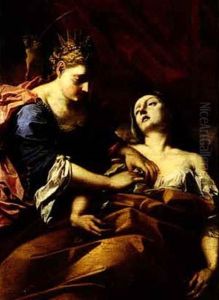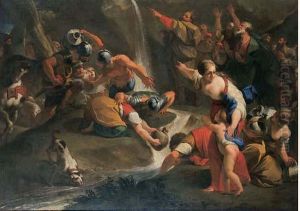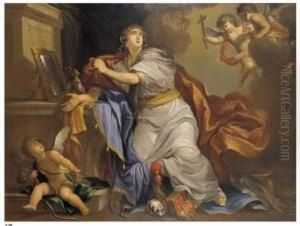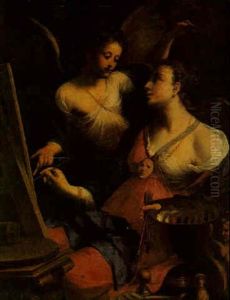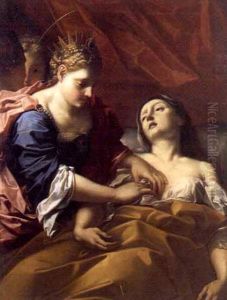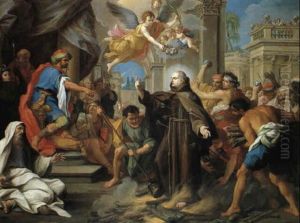Domenico Maria Muratori Paintings
Domenico Maria Muratori was an Italian Baroque painter who was active during the late 17th and early 18th centuries. Born in 1661 in Bologna, Italy, he was initially trained by his uncle, the painter Giovanni Maria Galli. His early education in art was later complemented by studies under the guidance of prominent Bolognese painter Lorenzo Pasinelli. Muratori's style was profoundly influenced by the dramatic chiaroscuro and dynamic compositions of the Baroque period, and he was particularly adept at religious and mythological subjects.
After completing his apprenticeship, Muratori worked in various cities across Italy, including Mantua and Rome, where he was exposed to the works of other Baroque masters. This exposure helped him to further develop his own artistic style. By the 1690s, Muratori had settled in Venice, where he absorbed the rich colorism characteristic of Venetian painting. His work during this period showcases a blend of Bolognese draftsmanship and the vibrant palette of the Venetian school.
In Venice, Muratori also worked as an engraver, which allowed him to disseminate his compositions to a broader audience. His engravings are marked by a precise linearity and clarity of form that reflect his painting style. In 1703, Muratori returned to Bologna, where he became a member of the Accademia Clementina. He continued to work prolifically, producing altarpieces, frescoes, and easel paintings for churches and private patrons.
Muratori's paintings are characterized by their refined elegance and often contain a sense of serene grandeur. He had the ability to depict figures with a gentle grace, and his use of light imbues his works with a soft, atmospheric quality. Although not as widely known as some of his contemporaries, Muratori contributed significantly to the artistic landscape of his time and his works can be found in various churches and collections in Italy.
Domenico Maria Muratori's career spanned a transitional period in art history, bridging the late Baroque and the early Rococo. He died in 1744 in Bologna, leaving behind a legacy of paintings that embody the transition of styles between these two periods. His work remains an important part of the study of Italian Baroque painting, reflecting the era's aesthetics and its cultural context.
